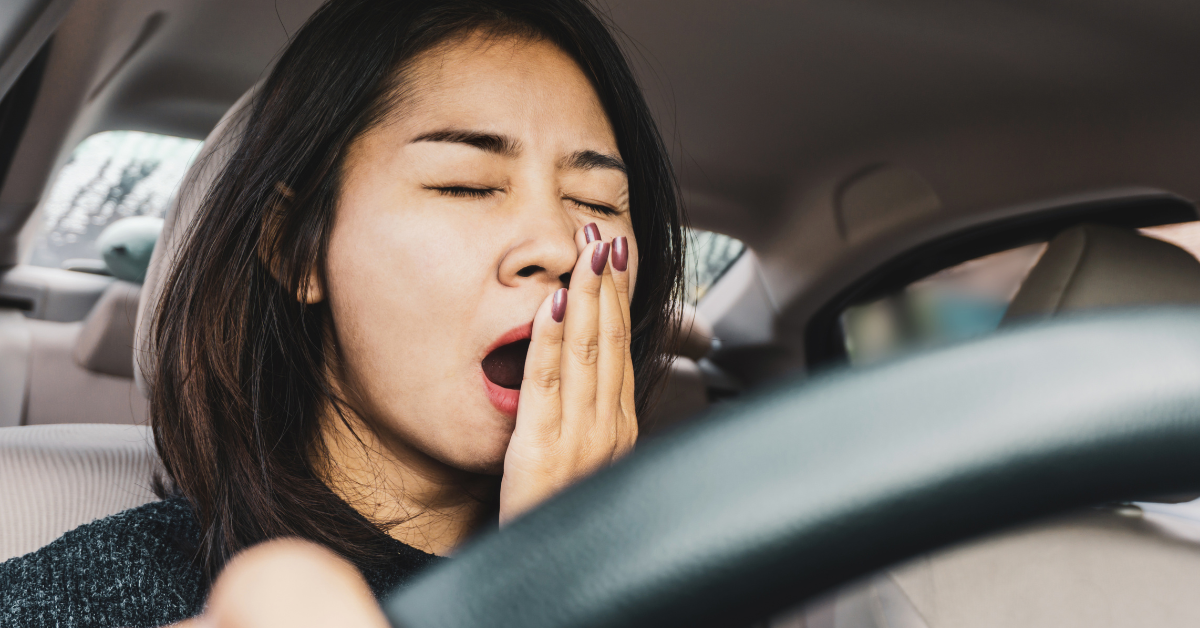Drowsy driving: Stay energized and alert on the road
Drowsy driving: Stay energized and alert on the road

Did you know that driving while fatigued is one of the most dangerous driving habits? Car crashes involving fatigued drivers claim more than 6,400 U.S. lives annually, according to the National Sleep Foundation (NSF). Drowsy driving can be just as dangerous as driving under the influence, the NSF reports. Like alcohol, sleepiness can slow down your reaction time, decrease awareness of your surroundings, impair judgment, and increase your risk of crashing.
A survey by the AAA Foundation for Traffic Safety, released in 2021, finds that:
- Roughly 95% of respondents identify drowsy driving as very or extremely dangerous. About 33% thought drowsy drivers risked being caught by the police.
- Nearly all respondents (98.1%) believed that people who were important to them would disapprove of drowsy driving.
- Despite high rates of respondents’ perceived danger and social disapproval regarding drowsy driving, 17.3% of them admit to having driven while being so tired that they had had a hard time keeping their eyes open at least once in the past 30 days.
Fatigue-related crashes are often caused by voluntarily not getting the sleep you need. The Centers for Disease Control and Prevention says most adults need at least 7 hours of sleep a day, while teens need at least 8 hours.
The AAA Foundation for Traffic Safety also conducted in-depth drowsy driving research in the U.S. using footage of everyday drivers. It found that the percentage of crashes involving drowsiness is nearly eight times higher than federal estimates. In the 2018 study, researchers examined video of drivers’ faces in the three minutes leading up to a crash. Using a scientific measure linking the percentage of time a person’s eyes are closed to their level of drowsiness, the researchers determined that 9.5 percent of all crashes and 10.8 percent of crashes resulting in significant property damage involved drowsiness. Federal estimates indicate drowsiness is a factor in only one to two percent of crashes.
The difficulty in detecting drowsiness following a crash makes drowsy driving one of the most underreported traffic safety issues. Knowing the warning signs can help drivers avoid dozing off behind the wheel. Common symptoms include:
- Having trouble keeping your eyes open
- Drifting from your lane
- Not remembering the last few miles driven
Drivers however should not rely on their bodies to provide warning signs for drowsiness and should instead prioritize getting at least seven hours of sleep before hitting the road. AAA recommends that drivers:
- Travel at times of the day when they are normally awake
- Avoid heavy foods
- Avoid medications that cause drowsiness or other impairment
For longer trips, drivers should:
- Schedule a break every two hours or every 100 miles
- Travel with an alert passenger and take turns driving
- Do not underestimate the power of a quick nap. Pulling into a rest stop and taking a quick catnap — at least 20 minutes and no more than 30 minutes of sleep — can help to keep you alert on the road.
Graduates of AAA's Driver Training and Education programs learn great driving habits. Whatever you need to learn behind the wheel, AAA has the course for you.